Summer residents who like to experiment with exotic plants can plant melotria in their area. It is also called: mini cucumber, African cucumber, mini watermelon. Melotria grows in equatorial Africa, a perennial plant. In the middle lane, it began to be cultivated because of its edible fruits and root crops. There are over 80 varieties of melotria. An annual plant is planted in summer cottages. It is known as rough melotria. The seeds can be purchased at flower shops.
The main advantage of melotria is that she is rich in fiber... It can be used on fasting days and with diets. Cucumber normalizes bowel function. Fruits contain vitamin B9, folic acid. It serves to maintain immunity, increases the elasticity of the walls of blood vessels. Pregnant women can include melotria in their diet, because B9 is necessary for the full formation of the fetal brain. Unfortunately, the use of African cucumber is not recommended for people suffering from gastritis or peptic ulcer disease.
Description of the plant
Melotria rough belongs to the pumpkin family. You can plant it in a garden bed or in a place that is created for relaxation. Its fruits and roots are used for food, and long vines will provide shade in the gazebo.
Stems of melotria rough have a length of more than 3 m... The leaves are small, similar to the leaves of a cucumber: green, triangular, pointed. They are not as rough and prickly as cucumber. There are many of them on the liana.
Melotria flowers are yellow. They are dioecious. Single flowers are female. Bunches of two flowers are male inflorescences. The bright color of the flowers of the plant attracts bees.
The African liana has small fruits. They are harvested when they reach 2 cm. In shape, the fruits are similar to a cucumber, and in color to a watermelon: light and - dark green, striped shell. The taste of the fruits is also identical to the cucumber, only the peel is tougher and has a sour taste. The shell is rough, but not prickly, like a cucumber. From one bush, you can collect up to 5 kg of fruit.
Root vegetables are like sweet potatoes. They look like a long red radish. The taste of root vegetables and radishes is similar. You cannot store them, because they quickly wither and become soft. It is eaten immediately after digging up. From one bush you can collect up to 1.5 kg of root crops.
How to plant?
Melotria seeds are small. They can be bought or harvested from ripe fruits. At the same time, they are washed and dried well. It is better to store them in a paper bag. In polyethylene, the seeds can become moldy. Planting is carried out in several stages..
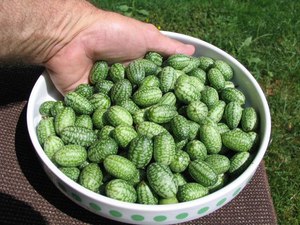 Stage 1 - sowing seeds. For sowing, use ordinary soil, the same as for traditional vegetables. A plastic cup can be used as a seed container. This will make it easier to remove the seedlings for planting in open ground. The root system will not be damaged. The seed is placed in the ground, sprinkled and watered with warm, settled water. The glass is covered with a film and placed on the windowsill, where there is more light, but there is no direct sunlight. Sowing is carried out at the end of April. The first shoots will appear in a week.
Stage 1 - sowing seeds. For sowing, use ordinary soil, the same as for traditional vegetables. A plastic cup can be used as a seed container. This will make it easier to remove the seedlings for planting in open ground. The root system will not be damaged. The seed is placed in the ground, sprinkled and watered with warm, settled water. The glass is covered with a film and placed on the windowsill, where there is more light, but there is no direct sunlight. Sowing is carried out at the end of April. The first shoots will appear in a week.- Stage 2 - hardening.If the seedlings are immediately planted on the site, then they may not withstand the air temperature that is unusual for it, so the sprouts must be gradually accustomed to the temperature outside the house. To do this, open a window and conduct airing.
- Stage 3 - landing in the ground. When the sprouts rise to 5 cm, you can plant melotria on the site. Disembarkation occurs in mid-May. First, you need to look at the weather forecast and monitor frosts. Melotria is a thermophilic plant, it does not tolerate low temperatures. It is better to choose a site that is light, but so that the sun does not burn the leaves. The planting site can be made round in the form of a flower bed or a regular straight bed can be prepared. The distance between plants in a garden bed or between flower beds should be at least 40 cm. This will allow the leaf and root systems to fully develop. Water the seedlings abundantly.
Since melotria is a liana, then it is necessary to provide supports for the development of stems. The plant produces tendrils with which it will grab onto the supports.
Care for melotria
Melotria is unpretentious, but some plant care rules it is necessary to observe:
 water every 2 days: 10 liters of water under each bush;
water every 2 days: 10 liters of water under each bush;- prevent waterlogging;
- if a crust appears on the soil, then it must be broken, loosened the earth;
- for lush greenery, melotria is fertilized with urea or other nitrogen fertilizer: it is introduced immediately upon sowing;
- in order to bypass the large proliferation of the leaf and stem system and to accelerate the development of fruits, mineral fertilizers are introduced during the flowering period; instead of mineral fertilizer, you can use peat or compost;
- if melotria is used as an ornamental plant, then it is necessary to cut off the stems, direct their growth;
- the vine is resistant to diseases, but when the first signs of powdery mildew appear, it is sprayed with soapy water;
Planting melotria is better away from zucchini, pumpkins and eggplants... Diseases that affect these plants can be transmitted to the mini cucumber.
When to Harvest?
Mini cucumbers will appear 2 weeks after transplanting. After another week, you can collect them. This happens in late May, early June. Melotria can quickly overripe. The fruit becomes soft, with a yellow tint. If the summer resident has a goal to collect seeds, then you need to wait for the fruit to fully ripen. For eating, pick green fruits, no more than 4 cm long.
From fruits and roots of melotria make vegetable salads... You cannot leave it in the refrigerator for a long time, for a maximum of three days. It loses its properties. Cucumbers can be preserved for the winter. The jar will look beautiful if the fruits of melotria are added to the squash and Kryushon.
Reviews of summer residents
I planted melotria around the gazebo. Liana rose quickly. He practically did not look after her: he did not introduce fertilizers, he did not cut the stems. Melotria covered the whole arbor. The leaves began to turn yellow and fall off in mid-October. Cucumbers, a little sour in taste, also pleased.
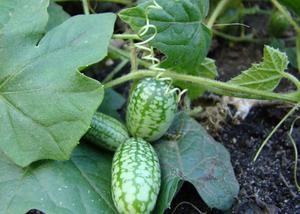 I came across melotria, some kind of same-sex. There were practically no inflorescences of two flowers. Neighbors, summer residents advised to plant new seedlings. This time I was lucky. Inflorescences appeared on the stems from one flower and from two. Fruits began to appear on the "old" plant. Apparently pollination reached them. I planted it like a pumpkin. Made round beds... The granddaughter enjoyed the little cucumbers most of all, but did not eat them. The rind is harsh.
I came across melotria, some kind of same-sex. There were practically no inflorescences of two flowers. Neighbors, summer residents advised to plant new seedlings. This time I was lucky. Inflorescences appeared on the stems from one flower and from two. Fruits began to appear on the "old" plant. Apparently pollination reached them. I planted it like a pumpkin. Made round beds... The granddaughter enjoyed the little cucumbers most of all, but did not eat them. The rind is harsh.
She planted melotria in the same way as cucumbers: first in cups on the balcony, then at their summer cottage. I planted one part of the seedlings in a greenhouse, the other in open ground. Cucumbers in the greenhouse appeared faster than in the open air. I tasted them. I didn't really like the fresh melotria. I decided to preserve it along with ordinary cucumbers. It was delicious. My family liked it. I made salad and okroshka from root vegetables. The taste is the same as that of radish.
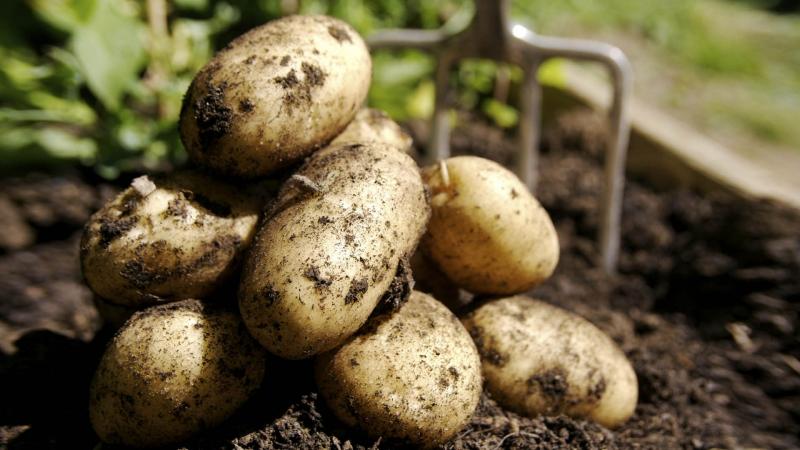
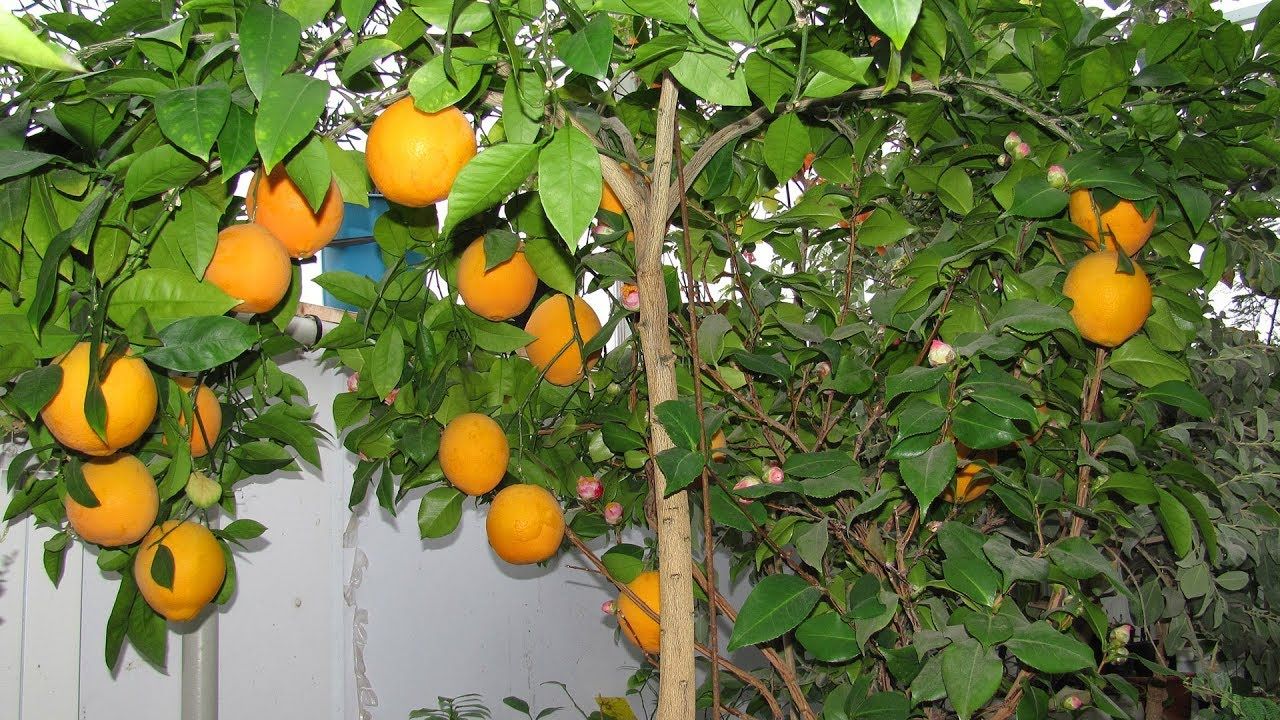
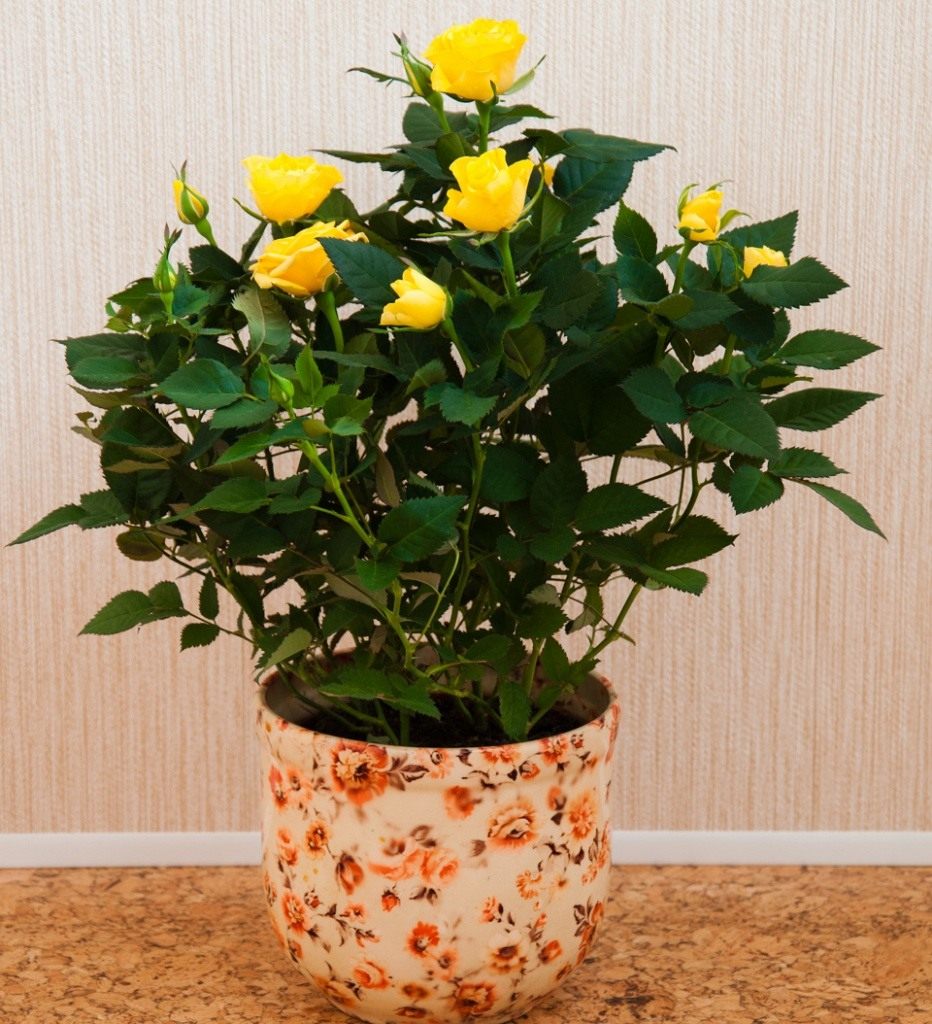
1 comment